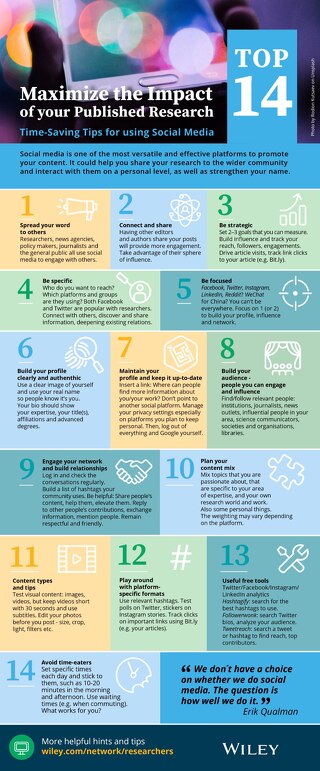5-tips-for-getting-your-work-noticed-with-kudos
August 04, 2016
First impressions count, and with over 2 million new publications added to the literature every year, it is important that your work stands out to readers, and can be readily understood.
A recent study by Nanyang Technological University revealed that proactively explaining and sharing publications on Kudos is correlated to a 23% increase in full-text downloads.
‘It is the start of evidence that will help researchers have the confidence to share their work more actively. Many researchers feel that their supervisors frown upon efforts to communicate, particularly via social media. Our ability to correlate those activities with the more meaningful metric of full text downloads can help justify time spent on such endeavours.’*
It can take as little as 10 minutes to claim, explain and share your work using the Kudos toolkit. Here are some top tips to make getting started easy!
Tip #1
You can connect your ORCID account to your Kudos account to easily bring all of your publications together. If you do not have an ORCID, we suggest you start by finding one of your publications to explain and share.
Tip #2
When using Kudos for the first time, try not to claim all of your work in one go. Claim one publication, explain it in plain language using the ‘explain’ tools, share your work online and then measure the effects of this in your ‘Author Dashboard’. You can then go back and claim your other work with a good idea of how to effectively explain your work, with some real-time insight into which sharing channels (Twitter, for example) attract most attention to your work.
Tip #3
Researchers are using Kudos not only for newly published work, but also to draw attention to older research - using the ‘explain’ tools to set it in the context of how the field has developed since the work was published. The Kudos blog has a useful step by step, to guide you through the explain tools: ‘How to explain your work – the Kudos way’.
Tip #4
You don’t need to be a social media genius for Kudos to work for you; several of our researchers are achieving higher views and downloads of their work simply by sharing links over email. Kudos recently published some useful blog posts: ‘Getting started on social media’ and ‘how to build a social media following’ on the Kudos blog series ‘Improve your results’.
Tip #5
Get your co-authors involved! Inviting co-authors to leave their own perspective, gives readers a broader understanding of the publication and what it’s about. Co-authors can then use the sharing tools provided in the Kudos toolkit, to share the publication with their own network of people, which again, will increase the work’s impact amongst a wider audience.
*A full overview of the study and its key findings (by Kudos Co-founder Charlie Rapple) can be found on the LSE Impact blog here, along with this companion piece on the Kudos blog.
Lauren McNeill is a Marketing Manager at Kudos.













